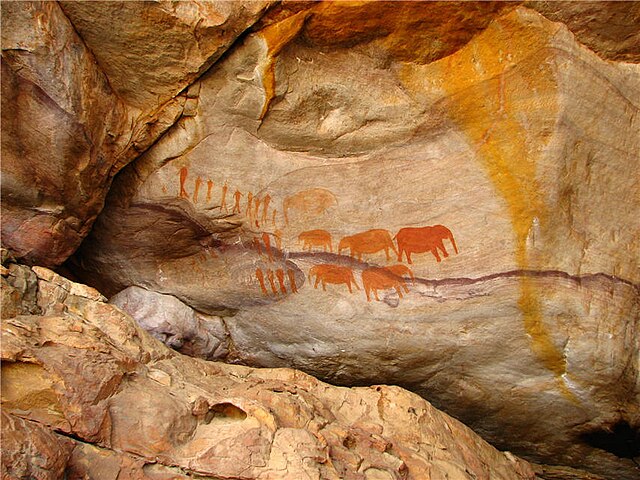Wupperthal is a small town in the Cederberg mountains in the Western Cape province of South Africa. It was founded in 1830 by two German missionaries of the Rhenish Missionary Society, Theobald von Wurmb and Johann Gottlieb Leipoldt, grandfather of C. Louis Leipoldt – some 100 years before the city of Wuppertal was formally established in Germany. In 1965, after the Rhenish Mission had gradually scaled down their activities in Southern Africa over a period of 40 years, a decision was taken that Wupperthal in future should become part of the Moravian Church, which by that stage had already made the transition from a mission to an autonomous church in South Africa. The town remains a Moravian mission station to this day.
Church in Wuppertal
Sketch of Wupperthal by the Norwegian missionary, Hans Christian Knudsen
The Cederberg mountains are located near Clanwilliam, approximately 300 km north of Cape Town, South Africa at about 32°30′S 19°0′E. The mountain range is named after the endangered Clanwilliam cedar, which is a tree endemic to the area. The mountains are noted for dramatic rock formations and San rock art. The Cederberg Wilderness Area is administered by CapeNature.
Sneeuberg, the highest peak in the Cederberg, with the Maltese Cross in the foreground.
Schematic diagram of an approximate 100 km west–east (left to right) geological cross-section through the Cederberg (a portion of the Cape Fold Belt to which Table Mountain on the Cape Peninsula also belongs). The rocky layers (in different colours) belong to the Cape Supergroup. The green layer is the Pakhuis Formation (a sediment, called "tillite", left by glaciers which for a short time crossed this area about 450 million years ago). It divides the Peninsula Formation Sandstone (or
San rock art near Stadsaal Cave, Matjiesrivier Nature Reserve in the Cederberg
Rock pool in a river in the Cederberg Conservancy






